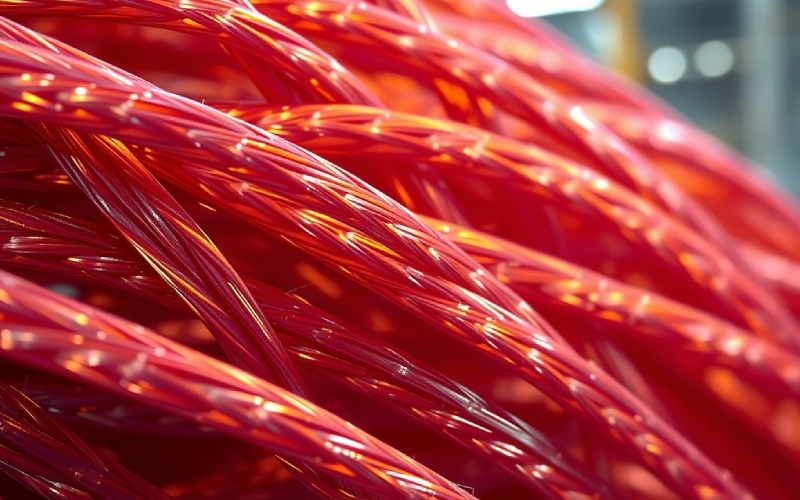Let Istar help you get started on your project with our experience and know-how!
Upload your design files and production requirements and we will get back to you within 30 minutes!

We see nylon and utilize it every day, however have you ever stopped to think of what it truly is and what makes it so special? Nylon isn’t just something; it’s a whole household of materials that have actually changed our globe. From the stockings your grandma may have worn to components in the automobile you drive, nylon is all over. In this article, I intend to show to you the extraordinary journey of nylon, from a laboratory exploration to an everyday vital. We’ll look at its amazing residential properties and why it’s such a prominent product for numerous different things. You’ll be amazed at how much there is to find out about this typical plastic.
I keep in mind initially learning more about nylon and assuming it was just a kind of fabric for clothes. However it’s so much even more than that. Nylon is a kind of plastic, particularly a synthetic polymer. Think about it like a very long chain of molecules, all connected together. This chain is what offers nylon its unique powers. The scientific name for the nylon family is polyamide, which sounds difficult, but it just explains the special chemical web link, called an amide bond, that holds the chain with each other. It’s this molecular framework that makes nylon so solid and durable.
This outstanding product starts its life as a plastic that can be melted and formed right into all type of forms. It can be made into a fiber for making nylon fabric, a strong part for an equipment, or even a thin movie for covering food. Since it’s a thermoplastic, it can be heated up and cooled down over and over once again, which makes it terrific for manufacturing. So, the next time you see something made of nylon, remember that it belongs to a big household of synthetic polymers that are throughout us, making our lives much easier in plenty of methods.

The story of nylon is a fantastic instance of just how science can result in amazing discoveries. Back in the 1930s, a group of researchers at a large chemical business called DuPont was trying to develop new materials. A great drug store called Wallace Carothers led this group. They were try out making long chains of molecules, a new polymer, in a process called polymerization. Eventually, they developed a new synthetic polymer that had some really fascinating properties. They found they might draw it right into a long, thin filament that was extremely strong.
This brand-new material was first used to make tooth brush bristles in 1938. But it truly became famous at the 1939 World’s Fair when they introduced nylon stockings. Before nylon, stockings were commonly made from silk, which was costly and didn’t last long. The manufacturing of nylon stockings was a massive success. Throughout The Second World War, nylon became even more essential. It was utilized to make parachutes, ropes, and tents for the armed forces due to the fact that it was so solid and sturdy. This shows how a scientific discovery can quickly come to be an essential part of our world.
There isn’t just one kind. There’s an entire family members of them, and each one has somewhat different homes. The various kinds of nylon are usually called with numbers, like nylon 6 and nylon 6,6. These numbers inform drug stores regarding the certain building blocks, or monomer devices, that compose the polymer chain.
Below are a few of one of the most typical sorts of nylon:
| Kind of Nylon | Trick Features | Common Utilizes |
|---|---|---|
| Nylon 6,6 | Very solid, rigid, and has a high melting point. | Engine parts, equipments, and rugs. |
| Nylon 6 | A little bit a lot more flexible and less complicated to dye than nylon 6,6. | Clothes, angling nets, and commercial parts. |
| Nylon 12 | Really resistant to wetness and chemicals. | Fuel lines in cars and trucks and adaptable tubing. |
| Nylon 510 | Established as an option to nylon 6,6. | Mostly utilized in industrial and clinical applications. |
There are additionally numerous other grades of nylon, including some that are combined with other materials to give them unique high qualities. As an example, some nylon is available in glass-filled variations, which makes them also more powerful and stiffer. The numerous residential properties of each sort of nylon make it possible to use this amazing plastic in many various means.
One of the important things that makes nylon so valuable is its unbelievable variety of residential or commercial properties. It’s not simply solid; it has a whole list of qualities that make it a prominent material for a lot of applications. One of the first things you could observe about nylon fabric is that it can be really glossy. Yet it can likewise be made to be much less shiny or even dull.
Here are a few of the crucial properties of nylon:
These nylon buildings likewise indicate that it’s easy to take care of, as it withstands reducing and wrinkling. The particular mechanical residential properties can be changed depending upon the sort of nylon and just how it’s made.
Have you ever questioned exactly how a strong item of plastic can be turned into a soft nylon fabric? It’s a fascinating manufacturing procedure that I find truly fascinating. All of it begins with small plastic pellets called nylon resins. The primary step is to thaw these pellets in an equipment.
When the nylon polymer is thawed, it is required with a special device called a spinneret. A spinneret has great deals of little openings, and when the thawed nylon is pressed through, it comes out as long, slim threads called filaments. As quickly as the filaments appear of the spinneret, they are cooled down with air, which makes them solid. This procedure is called extrusion. The next step is to extend these filaments to make them stronger and a lot more flexible. This extending draws the lengthy molecular chains inside the nylon into a more organized pattern, which provides the fiber its toughness and durability. Ultimately, these long filaments can be turned together to make thread, which is after that woven or knitted right into the nylon fabric we see in clothes and various other products. This is exactly how a difficult plastic ends up being a soft and flexible textile.
The reason we use nylon in numerous various methods is because it has such a fantastic mix of buildings. It resembles having a superhero product that is solid, light-weight, and can resist a lot of various kinds of damages. For instance, compared to various other plastics, nylon is usually stronger and can take care of greater temperatures. This makes it a great selection for parts under the hood of an automobile.
An additional big reason nylon is so popular is that it can commonly be made use of to change metal components. Making use of nylon parts as opposed to steel ones can make things lighter, which is very important in vehicles and aircrafts. Nylon parts can likewise be quieter and trigger less endure various other parts they touch. And also, making dismantle of nylon plastic with a procedure like injection molding can be less costly and less complicated than making them out of steel. The capacity to mold and mildew nylon into intricate shapes with limited resistance also makes it really beneficial for making all sorts of equipment components.
You may be shocked at exactly how usually you come across nylon in your daily life. As a result of its various properties, nylon is utilized to make a big variety of products. From the minute you get up, you may be communicating with nylon.
Right here’s a table of some common uses of nylon:
| Category | Examples |
|---|---|
| Clothing | Stockings and underwear, swimwear, raincoats, and sportswear. |
| House Things | Rugs, tooth brush bristles, and hair combs. |
| Industrial Applications | Ropes, webs, seat belts, and conveyor belts. |
| Maker Components | Gears, bearings, and screws. |
| Outdoor Equipment | Outdoors tents, knapsacks, and parachutes. |
As you can see, nylon is everywhere! In the 1940s and 1950s, after it was used in the battle, it ended up being a preferred substitute for products like silk and hemp. Its stamina and durability made it a great selection for all these various points. So, the next time you make use of a toothbrush or place on a raincoat, there’s a good chance you’re utilizing nylon.

When I consider what makes nylon so unique, its stamina is one of the first things that comes to mind. It has an extremely high tensile strength, which means it can manage a lot of drawing pressure without breaking. This is just one of the major reasons it’s made use of for things that need to be really strong, like rope and tire cords.
Compared to natural fibers like woollen or cotton, nylon is a lot more powerful. It’s likewise much more long lasting and immune to abrasion, which is why it’s commonly made use of in carpets and on the outside of backpacks. When you compare nylon to other artificial textiles like polyester, nylon is generally more powerful and extra resilient. This is why it’s a popular option for things that require to be challenging and last a long time. The particular strength of nylon can vary depending upon the type, like whether it is nylon 6 or nylon 6,6, and just how the fiber is made.
Among the excellent things about nylon fabric is that it’s very simple to deal with. This is among the properties that made it so popular for apparel. Unlike some natural fibers, nylon does not need unique therapy. You can typically just wash it in an equipment and it will be fine.
Here are a few reasons that nylon is easy to care for:
One point to be mindful about with nylon is high warm. Since it’s a thermoplastic, it can melt if it gets also warm. So, it’s a great idea to make use of a reduced warm establishing if you need to iron a nylon garment. The capacity to quickly dye nylon additionally suggests it is available in a variety of colors.
I have actually stated that there are various qualities of nylon, and among one of the most fascinating is glass-filled nylon. This is specifically what it sounds like: nylon that has been mixed with little glass fibers. Adding glass to the nylon plastic makes it also more powerful, stiffer, and more long lasting. It likewise improves its resistance to warmth.
You might be asking yourself why you would require nylon to be even more powerful. Well, this special kind of plastic is typically utilized for commercial applications where components need to be very challenging. For instance, glass-filled nylon is often used to make parts for automobiles, electronics, and power devices. These parts constructed from glass-filled nylon can manage a great deal of stress and heats without damaging or altering form. This is another excellent instance of how researchers can alter the buildings of a polymer to make it ideal for a specific job.